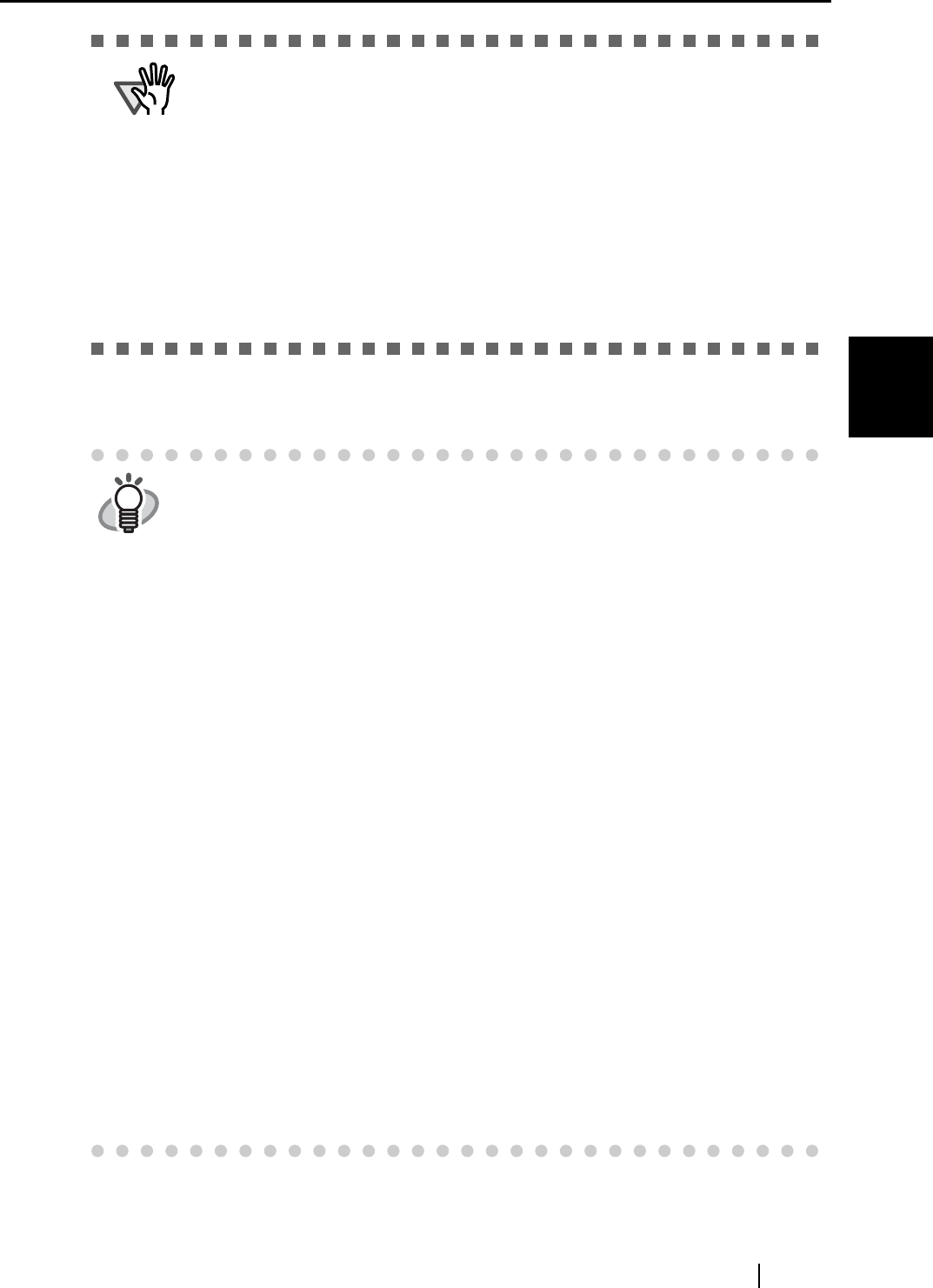
3.2 Scanning Different Document Types
ScanSnap S500 Operator's Guide 37
Basic Scanner Operations
3
ATTENTION
• Documents written or filled with a pencil may be smeared during a scan. It is
recommended to use Carrier Sheet. If such documents are scanned without
using Carrier Sheet, the rollers get dirty and the paper may not be fed properly.
In the case where you scan such documents without using Carrier Sheet,
clean the rollers as often as possible. For details refer to "6.2 Cleaning the
Scanner Exterior" (page 147).
• Carbonless paper contains chemical substances that may harm the Pad ASSY
or rollers (e.g. Pick roller) when documents are fed. Pay attention to the follow-
ing:
- Clean the Pad ASSY or rollers as frequently as possible.
- The service life of the scanner may be shortened compared with the case of
scanning woodfree paper.
HINT
Do not use the following documents:
• Documents with paper clips or staples (they can be used after the paper clips
or staples are removed)
• Documents on which the ink is still wet (they can be used after the paper is
completely dry)
• Documents larger than Legal (width: 8.5 in, length: 14 in)
• Documents folded in half larger than 216 x 297 mm (W x L) (8.5 x 11.7 in)
• Materials other than paper such as fabric, metal foil, or transparencies
• Carbon paper
• Thermal paper
If you load the following documents directly on the scanner, the documents
may be damaged or may not be scanned successfully.
It is recommended to insert the documents inside the Carrier Sheet to scan.
• Documents smaller than 2 (width) x 2 (length) inches
• Documents thinner than 52 g/m
2
(14 lb) and thicker than 127 g/m
2
(34 lb)
• Documents of non-uniform thickness (e.g. envelopes and paper which has
another paper pasted on.)
• Wrinkled or curled documents
• Folded or torn documents
• Tracing paper
• Coated paper
• Photographs (printing paper)
• Perforated or punched documents
• Documents that are not square or rectangular
• Documents of non-uniform width
• Carbonless paper


















